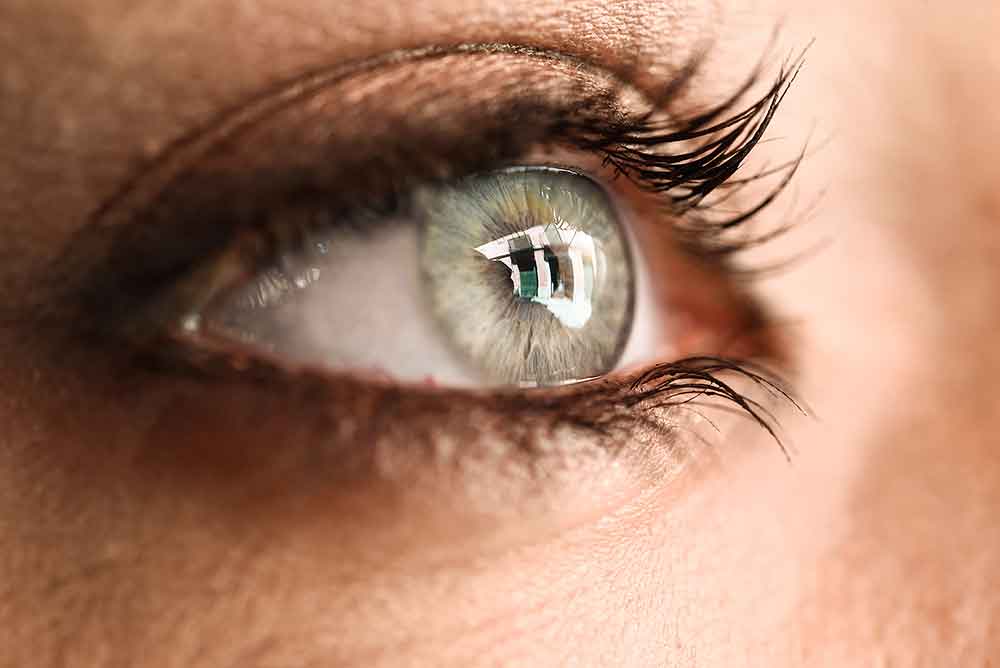
Our eyes work in a manner quite similar to that of a camera. Each of your eyes contains two naturally occurring lenses. There is one lens on the front surface of your eye, and another lens, known as the crystalline lens, is located within your eye. Together, these lenses bring images into sharp focus on the retina, which is located in the center of the back of the eye. When we are born, the crystalline lens in our eyes is clear. It turns a yellowish color and becomes more rigid as we get older. As soon as it turns clouded, we refer to it as a cataract, and it starts to affect the quality of our eyesight.
Cataracts, if left untreated, can cause damage to your vision and potentially result in the complete and permanent loss of your sight. The removal of your cataract can be accomplished in a short amount of time and without any discomfort, thereby assisting in the prevention of further vision loss.

Cloudiness in the lens is one of the most common signs of cataracts, which can also cause poor vision. Patients report improved vision after having their native lens surgically removed and replaced with an artificial one. They also observe that the colors appear to be more vivid and dazzling.
When you have trouble seeing, it can be tough to complete the things that are required of you on a daily basis. This is especially relevant to activities like working on intricate projects or driving late at night. Many patients find that they are able to resume past interests and activities that they had to give up because of poor vision after undergoing cataract surgery.
During the consultation for your cataract, our specialists will talk about you about the many options for Advanced Technology. Vision at a single point in the distance is provided by the standard lenses that will be used during your cataract removal procedure. You will be able to maximize your ability to focus at a variety of distances with the use of an advanced technology lens such as a multifocal intraocular lens (IOL). This also reduces the amount of time you need to spend wearing glasses if you are one of these patients.
Surprisingly, cataract surgery is one of the operations that causes the least amount of discomfort for patients. You should feel better in a few days, and you should almost instantly notice an improvement in your vision.

The surgeries for cataracts are highly successful. Because of advances in medical technology, cataract surgery is now a less risky procedure that can also be adapted to each patient's individual eyes and requirements for clear vision.
Cataract removal is not only successful but also has a lasting effect that might last a lifetime. The natural lens is removed during cataract surgery, so the condition can never develop again. The longevity of the artificial lens that is used in place of the natural lens is designed to exceed 200 years.
The majority of patients report that the procedure to remove cataracts is both rapid and painless. Outpatient surgery for cataracts means that you will be able to return home the same day as your treatment. You are going to need to get some rest, and you should have someone drive you home. On the other hand, the recuperation process as a whole is often relatively simple. Patients frequently report that they are able to detect improvements in their vision quite rapidly.

Today’s lens replacement patient needs great vision after surgery. Previous technologies for lens replacement surgery gave just one focal point: distance, leaving patients dependent on reading glasses or bifocals for their vision correction needs. Because of recent developments in multifocal technology, it is now possible to read the words on prescription bottles, magazines, newspapers, and computer screens without the use of magnifying glasses or bifocals (or even trifocals), while still maintaining your ability to see objects that are further away in crisp detail.
These lenses have the capability of constantly delivering better vision at a variety of ranges, ranging from close up to far away. Your eye doctor will be able to advise you on the type of lens that will best meet the demands placed on your vision by your lifestyle. These lenses are not appropriate for everyone, and more testing will be required to establish whether or not you are a good candidate for the intraocular lenses that are being discussed here. The vast majority of patients who have opted for advanced IOLs are extremely pleased with the results of the treatment and say they would suggest it to members of their family and friends who suffer from cataracts.
Your choice of lens should be viewed as an investment that has the potential to help you keep the same level of comfort in your daily life and have clear vision whenever you open your eyes for the rest of your life.
The formation of cataracts is a normal process associated with aging. Cataracts are a natural consequence of aging and will affect everyone at some point in their lives. Cataracts are usually caused by aging and can begin to form as early as the middle years of a person’s life; however, vision loss often does not occur until after the age of sixty.
Other factors that can contribute to the development of cataracts include diabetes, eye trauma, continuous use of steroid drugs, exposure to ultraviolet radiation, and smoking.